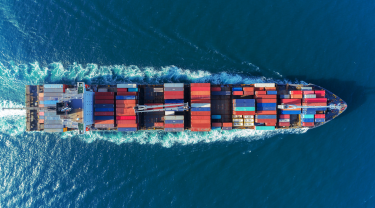One of the biggest concerns facing Canadian exporters right now is supply chain constraints. It’s bad enough that certain critical raw and finished goods are in short supply, but even if there were ample amounts of the stuff we need, it would be stuck on a dock somewhere far away. With the dire shortage of global shipping, it seems there aren’t enough ships, containers, trucks, or labourers to get things moving, and business is beginning to panic. What’s going on, and is there hope for a remedy?
Sadly, we’ve been here before. In 2004, the western seaboard of the United States was clogged with ships that couldn’t offload cargoes due to tight trucking and rail capacity, and congested urban infrastructure around key ports. The crisis brought spending remedies and political oversight committees, put in place to ensure it wouldn’t happen again.
The remedies don’t seem to have worked. First, there’s a shortage of ships. Prices for tankers and container ships have soared multi-fold in the past 18 months. Containers now cost five to six times more than they did just months ago. And the ships that are out there are lined up at ports, waiting for their chance to offload, while exorbitant daily lease rates pile up. Currently there are more than 60 container ships anchored off Los Angeles-Long Beach when normally there’d be one or two. They’re not alone; ports the world over are in the same boat, including Vancouver, where similar lineups are occurring.
You should also check out
EDC’s Economics team identifies the challenges and opportunities facing Canadian companies, including the impact of COVID-19, global protectionism, climate change and social unrest.
Why the repeat performance? Lean production and logistic systems don’t react well in times of extreme economic turbulence. The pandemic has served up just that, and while turning the system off was relatively simple, getting it running again is something else altogether. Growth has rocketed up well ahead of expectations, catching the system off guard.
What is more, the world has endured a period of particularly slow growth in the 12 years following the global financial crisis. As such, investment in shipping capacity faltered, leaving us less able to manage today’s surge. Catching up takes time, not to mention that there’s little capacity to actually create capacity.
A recent small and informal poll of our export customers revealed that lead times on orders are anywhere from one to six months, literally an eternity in just-in-time terms.
Is help on the way? Well, the current jam is causing prices to spike to unthinkable levels, threatening profit margins everywhere. Thankfully, high prices are the solution for high prices. Reports are already showing that available ships are being repurposed to carry containers, principally because there’s money to be made. Idled containers are now a lot more valuable, and are making their way back into the system. Online platforms designed to locate and deploy available ships and empty containers are also helping to unglue the system. History shows that current price spikes shouldn’t last more than a few months.
At the same time, possessors of the scarce resources are making a fortune, and they want the good times to last. After all, they have endured multiple lean years, and in a way this is payback time. As shippers are also profit-maximizers, they will go where the money is, and not necessarily where the most critical needs are. While frustrating, this too has proven in past years to be temporary—high profits always attract more capacity.
Adding to the immediate challenge is current growth. Today’s surge of activity is no mere flash in the pan. Pent-up demand is significant, and global. This pressure is enough that it could last for years to come. It won’t make immediate conditions much easier, but it will justify the capacity additions that are sure to follow in short order. Hot demand is normally a good problem to have, but in the current environment suggests that it may take a bit longer to work things out.
The bottom line?
Shipping capacity is critically short, but pricing mechanisms will ensure that we get through this. The pandemic’s pileup of deferred demand means there’ll be a need to add to shipping capacity again, and again, and again. When we get there, it’ll generally be good for global trade, which has a very bright long-term future.
This commentary is presented for informational purposes only. It’s not intended to be a comprehensive or detailed statement on any subject and no representations or warranties, express or implied, are made as to its accuracy, timeliness or completeness. Nothing in this commentary is intended to provide financial, legal, accounting or tax advice nor should it be relied upon. EDC nor the author is liable whatsoever for any loss or damage caused by, or resulting from, any use of or any inaccuracies, errors or omissions in the information provided.







